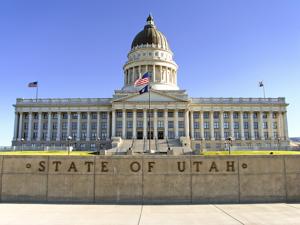Utah enacts new legislative maps

Utah Gov. Spencer Cox (R) signed new state legislative district maps for both chambers into law on Nov. 16, 2021. After Cox called a special session to begin on Nov. 9, the Utah legislature voted to approve the House and Senate district maps on Nov. 10. The House passed a proposed map of their own districts in a 60-12 vote and voted 58-13 to approve the Senate map proposal. The Senate approved the House district proposal in a 25-3 vote and approved their own proposed map in a 26-2 vote. These maps take effect for Utah’s 2022 legislative elections.
Both proposals differed from those presented to the legislative committee by Utah’s Independent Redistricting Commission on Nov. 1. The commission presented 12 maps (three each for House, Senate, congressional, and school board districts) to the Legislative Redistricting Committee, one of which was submitted by a citizen.
Lynette Wendel (D), who lost the election to represent Utah House District 39, said the districts were drawn to maintain Republicans’ majorities in the state legislature. “It was a very strategic approach so that very few people who have an insulated agenda can force that agenda continuously on this state,” Wendel said. Summit County Democratic Party Chair Katy Owens (D) said, “We would love to be able to have the opportunity to elect the representatives that we want but these maps have been deliberately drawn to prevent that.”
Sen. Scott Sandall (R), who along with Rep. Paul Ray (R) co-chaired the Legislative Redistricting Committee, said the new maps were drawn with citizens’ interests in mind. “After listening to Utahns and touring the state, Rep. Ray and I created maps that we believe incorporate the interests of all Utahns,” Sandall said. Ray said the legislature, not the Independent Redistricting Commission, “has the constitutional responsibility to divide the state into electoral districts” and he and Sandall “have worked tirelessly to come up with boundaries that best represent the diverse interests of the people we were elected to represent.”
As of Nov. 17, 20 states have adopted legislative district maps, one state enacted its legislative boundaries based on Census estimates which will be revised in an upcoming special session, and 29 states have not yet adopted legislative redistricting plans after the 2020 census. At this point after the 2010 census, 29 states had enacted legislative maps.
Nationwide, legislative redistricting has been completed for 687 of 1,972 state Senate seats (34.8%) and 1,780 of 5,411 state House seats (32.9%).
Disclaimer: This content is distributed by The Center Square

